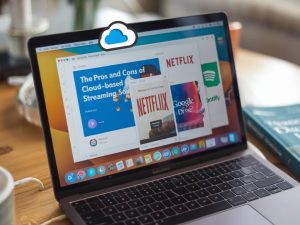L’essor des chaînes FAST : l’avenir de la télévision gratuite financée par la publicité

L'essor des chaînes FAST : l'avenir de la télévision gratuite financée par la publicité
What Are FAST Channels?
FAST stands for Free Ad-Supported Streaming Television. These are digital TV channels that deliver linear-style programming over the internet, without requiring a paid subscription. Typically, FAST channels stream content 24/7, similar to traditional cable or broadcast television, but are accessible on platforms like Samsung TV Plus, Pluto TV, Tubi, Freevee, and Roku Channel — all at no cost to the viewer.
The key distinction of FAST channels lies in their monetization model: they are entirely supported by advertising revenue. Viewers get instant access to a variety of programming genres without signing up or entering payment details. For those cutting the cord or looking for alternatives to costly streaming subscriptions, FAST channels offer a compelling—and growing—option.
Why FAST Channels Are Gaining Traction
In the midst of rising subscription fatigue and economic instability, audiences are becoming increasingly selective about which services they’re willing to pay for. According to recent data from Nielsen and Ampere Analysis, coupled with the global success of platforms like Pluto TV (owned by Paramount Global), it’s evident that ad-supported streaming is resonating with audiences across demographics.
There are several reasons why FAST channels are rapidly gaining popularity:
- Zero cost to entry: FAST requires no subscription fees, which appeals to a broad audience segment trying to cut household expenses.
- Ease of access: Users can start watching without lengthy signup processes or payment info—FAST platforms often come pre-installed on smart TVs and streaming devices.
- Nostalgic programming: Many FAST services offer reruns of classic TV shows and older movies, tapping into the growing nostalgia market.
- Curated Experience: Unlike on-demand platforms where viewers must choose what to watch, FAST delivers a linear, scheduled experience—ideal for passive viewing.
Major Players in the FAST Ecosystem
Today, multiple companies have entered the FAST market, ranging from established broadcasters to digital-first startups. Some of the key players include:
- Pluto TV: One of the pioneers in the FAST space, Pluto TV offers over 250 live channels and is available in multiple countries.
- The Roku Channel: Roku’s free streaming channel includes both on-demand content and dozens of FAST channels, and plays a critical role in the company’s strategic growth.
- Tubi: Owned by Fox Corporation, Tubi delivers thousands of hours of ad-supported video and linear streams across genres.
- Samsung TV Plus: A native app built into Samsung Smart TVs, bringing an expansive array of FAST channels directly to living room screens.
- Xumo: A joint venture between Comcast and Charter, focusing heavily on integrating FAST into connected TVs and broadband devices.
The Business Model Behind FAST
Unlike subscriber-based platforms like Netflix or Disney+, which rely on monthly fees to sustain operations, FAST channels generate revenue exclusively through advertising. This model harks back to the golden age of broadcast television, where viewers got content for free in exchange for ad exposure.
The modern twist, however, lies in targeting and personalization. Thanks to VAST (Video Ad Serving Template) and SSAI (Server-Side Ad Insertion) technologies, advertisers can dynamically serve ads to specific audiences, increasing relevancy and return on investment. Advertisers are drawn to FAST platforms because of their scale, data-rich environments, and brand-safe inventory.
From a broadcaster’s point of view, FAST channels represent an opportunity to extend the life of older content, reduce churn from streaming fatigue, and gain new monetization channels without cannibalizing existing pay-TV arrangements.
How FAST Channels Differ from AVOD and SVOD Models
In the OTT landscape, it’s easy to confuse FAST channels with AVOD (Advertising Video on Demand) services, but there are key distinctions:
- FAST: Structured like traditional TV channels, content streams continuously in a linear format. Examples: Pluto TV, Xumo.
- AVOD: Content is available on-demand with ads, but the viewer selects what to watch and when. Examples: Tubi, Crackle.
- SVOD: Subscription-based, typically without ads, and offers full on-demand access. Examples: Netflix, Disney+.
FAST channels cater to a different consumer mindset—one that prioritizes low-effort discovery, background entertainment and passive consumption, making them ideal for placement on secondary screens like kitchen TVs or in waiting areas.
The Role of Content Curation and Licensing
One of the defining characteristics of FAST is the reliance on content bundling and curation. Media companies are launching branded FAST channels around individual IPs—such as a dedicated “Baywatch” channel or an all-day “Star Trek” stream—offering fans a niche, lean-back experience.
Licensing older libraries is also a cornerstone strategy. Since the margins can be thin on advertising alone, repackaging economical, pre-owned content becomes vital. As I’ve noted in recent interviews with digital content managers, FAST has become a powerful tool to monetize long-tail content that has already recouped its production costs.
Is FAST the Future of TV?
While it’s unlikely that FAST will replace all forms of streaming or broadcast television, its growth signals an important shift in viewer habits. The pendulum is swinging back toward an ad-based model, but with the digital sophistication that today’s viewers expect. For younger audiences who never subscribed to cable, FAST serves as their introduction to linear TV in a new form—one that is free, convenient, and always on.
Furthermore, as connected TV (CTV) ad spending continues to grow, the revenue opportunities for FAST platforms and content owners are significant. GroupM forecasts that CTV ad spending will hit $25 billion by 2026 in the U.S. alone. This is why media giants are investing in both owned and third-party FAST strategies—offering their content across multiple venues to capture ad dollars while widening audience reach.
In my observations, portfolio flexibility is becoming the standard. Companies now maintain a hybrid approach, balancing SVOD, AVOD, and FAST channels to maximize monetization across platforms and demographics. As a result, content owners, advertisers, and viewers all benefit from a diversified and dynamic media environment.
For consumers looking to expand their streaming palette without opening their wallets, and for advertisers looking to engage distracted but reachable audiences, the rise of FAST channels feels like the natural evolution of free-to-air television in the digital age.







